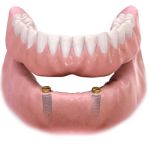Preventing Tooth Disease in Children: The Basics
Tooth diseases, especially cavities, are a common concern for children. It's crucial to understand the causes and take proactive measures to prevent them. Bacteria in the mouth, combined with poor oral hygiene and an unhealthy diet, can lead to tooth decay. Cavities start when the bacteria produce acids that erode the tooth enamel.
Oral Hygiene Practices for Children
Establishing good oral hygiene habits early is key. Wiping your baby's gums twice a day with a soft, clean cloth is a great start. Once teeth come in, brushing should begin. For infants and young children, a soft, small-bristled toothbrush and plain water can be used initially. As they grow, fluoride toothpaste can be introduced. It's important to supervise children's brushing until they have mastered the skill, usually around age 7-8. Flossing is also essential and can start as soon as teeth touch. Special floss sticks can make it easier for kids.
Healthy Eating for Strong Teeth
Avoid sugary and starchy foods and drinks. Water is the best choice to keep the mouth clean and balanced. Choose snacks like yogurt, cheese, nuts, and apple slices that are less likely to stick to teeth and feed bacteria. Limiting snacking frequency and drinking water after snacks can also help.
Parental Actions and Precautions
Parents need to be cautious when sharing utensils or pacifiers with their children to prevent the transfer of cavity-causing bacteria. Electric toothbrushes can make brushing more effective and enjoyable for kids. Dental sealants can provide an extra layer of protection for molars. Regular professional cleanings and fluoride treatments are important for strengthening teeth.
Symptoms and Detection of Cavities
Cavities may cause sensitivity when eating or drinking hot, cold, or sweet items. Early signs can include small white or discolored spots on the teeth. However, not all color changes indicate cavities. X-rays may be needed to detect cavities between teeth.
The Importance of Regular Dental Checkups
Children should have their first dental appointment by their first birthday or when the first tooth appears. Regular checkups every six months allow for early detection of problems, education on proper oral care, and the recommendation of preventive measures such as fluoride supplements and sealants.
In conclusion, preventing tooth disease in children requires a combination of proper oral hygiene, a healthy diet, parental awareness, and regular dental visits. By following these tips and maintaining a consistent routine, you can significantly reduce the risk of your child developing cavities and other oral health issues, ensuring they have a healthy and beautiful smile for years to come.






 City Dental- Dental Implants and Orthodontics4.0 (40 review)
City Dental- Dental Implants and Orthodontics4.0 (40 review) Downtown Dental Center4.0 (114 review)
Downtown Dental Center4.0 (114 review) Todays Dental Of Joliet (formerly Hammes Family Dental)4.0 (130 review)
Todays Dental Of Joliet (formerly Hammes Family Dental)4.0 (130 review) Berg Dental Group4.0 (70 review)
Berg Dental Group4.0 (70 review) Holden Barry L DMD, PC4.0 (10 review)
Holden Barry L DMD, PC4.0 (10 review) Midjersey Family Dentistry4.0 (86 review)
Midjersey Family Dentistry4.0 (86 review) The Importance of Oral Health Education During Pregnancy for a Healthy Pregnancy
The Importance of Oral Health Education During Pregnancy for a Healthy Pregnancy Best Tips for Brushing Your Teeth Properly for Healthy Gums: Essential Techniques for Oral Health
Best Tips for Brushing Your Teeth Properly for Healthy Gums: Essential Techniques for Oral Health Why Skipping Dental Checkups Can Lead to Bigger Oral Health Problems
Why Skipping Dental Checkups Can Lead to Bigger Oral Health Problems Advantages of Porcelain Dental Restorations
Advantages of Porcelain Dental Restorations How Can Diabetes Cause Tooth and Gum Problems? Preventing and Managing Oral Health Issues
How Can Diabetes Cause Tooth and Gum Problems? Preventing and Managing Oral Health Issues Healthy Habits for Promoting Good Oral Health and Hygiene: Tips for a Healthy Smile
Healthy Habits for Promoting Good Oral Health and Hygiene: Tips for a Healthy Smile